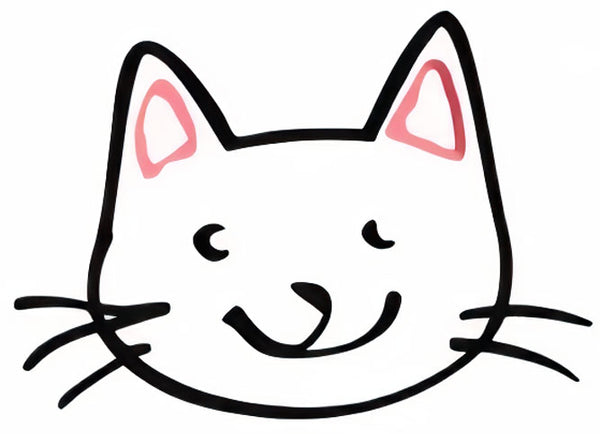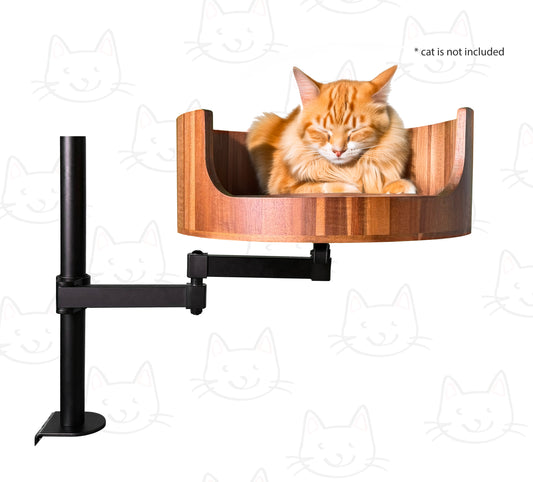
Why is my cat wagging his tail? Understanding the Signs
Share
Have you ever noticed your cat wagging its tail and wondered what it means? Cats communicate in many ways, and tail movements are one of the key ways they express themselves. Understanding the signs behind your cat's tail wagging can provide valuable insight into their emotions and needs. In this article, we will explore the various reasons why your cat may be wagging its tail, including both positive and negative signals.
From Desk Cat Nest, a leading source of information on cat behavior and care, we will delve into the different types of tail movements and what they can signify. Whether your cat is flicking its tail playfully or swishing it rapidly, each movement carries a distinct message that can help you better understand your furry companion. By deciphering your cat's tail language, you can strengthen the bond you share and ensure their well-being. Stay tuned as we unravel the mystery behind why your cat is wagging his tail.
1. Cat tail wagging can indicate various emotions, such as annoyance, excitement, or aggression.
2. It's important to pay attention to your cat's overall body language to interpret the meaning of tail wagging accurately.
3. Tail wagging can also be a signal of impending aggression, signaling that your cat is feeling threatened or defensive.
4. Understanding your cat's tail language can help improve communication and strengthen the bond between you and your feline friend.
5. If your cat is wagging their tail aggressively, it's best to give them space and avoid provoking further reactions.
Understanding Cat Body Language
When a cat wags its tail, it can be a sign of various emotions and messages they are trying to convey. Cats typically wag their tails when they are feeling agitated, anxious, or frustrated. It can also be a warning sign that they are reaching their limit with a certain situation or interaction. Understanding your cat's body language and tail movements can help you decipher what they are trying to communicate.
Causes of Tail Wagging in Cats
There are several reasons why a cat may wag its tail. One common cause is overstimulation or excitement. If your cat is playing vigorously or engaged in a chase, they may wag their tail as a way to release their excess energy. Tail wagging can also indicate that your cat is feeling threatened or scared. In these situations, it's important to give your cat space and allow them to calm down on their own terms.
Health Concerns to Consider
In some cases, tail wagging in cats can be a sign of underlying health issues. For example, hyperthyroidism, neurological problems, or spinal cord injuries can cause unusual tail movements in cats. If your cat is not displaying any other signs of stress or agitation, it's important to monitor their behavior and consult a veterinarian if the tail wagging persists or is accompanied by other concerning symptoms.
How to Respond to Tail Wagging Behavior
When your cat is wagging their tail, it's essential to pay attention to their body language and the context of the situation. Avoid approaching or petting your cat if they are displaying signs of agitation or stress. Instead, give them space and time to calm down on their own. If your cat's tail wagging behavior continues or becomes more frequent, consider consulting a professional behaviorist for guidance on how to address the underlying causes.
Frequently Asked Questions
Why is my cat wagging his tail?
There are several reasons why your cat may be wagging his tail. It could be a sign of excitement, annoyance, or even aggression. Pay attention to your cat's body language and the context in which the tail wagging is happening to determine the reason.
Is tail wagging always a sign of aggression?
No, tail wagging is not always a sign of aggression in cats. While it can indicate annoyance or aggression in some situations, tail wagging can also be a sign of excitement or playfulness. It's important to consider the overall behavior of your cat along with the tail wagging to understand its meaning.
Should I be concerned if my cat's tail is wagging constantly?
If your cat's tail is wagging constantly, it could indicate that they are feeling stressed or anxious. It's important to try to identify the cause of their stress and provide a calming environment for them. If the constant tail wagging continues, it may be a good idea to consult with a veterinarian for further advice.
How can a Desk Cat Nest help with my cat's tail wagging?
A Desk Cat Nest can provide your cat with a cozy and safe space where they can relax and feel secure. This can help reduce stress and anxiety, which may be contributing to your cat's tail wagging behavior. Providing a comfortable and calming environment for your cat is essential for their overall well-being.
In conclusion, investing in a Desk Cat Bed can greatly help address the issue of why your cat may be wagging his tail. Providing a comfortable and secure space for your feline friend to rest and relax can reduce stress and anxiety, leading to fewer tail wagging behaviors. The elevated design of the Desk Cat Bed also helps keep your cat safe from potential threats and disturbances, allowing them to unwind and feel at ease. With its cozy cushioning and stylish design, this bed not only offers a practical solution but also adds a touch of sophistication to your home decor. Say goodbye to the mystery of why your cat is wagging his tail with the Desk Cat Bed.



















































